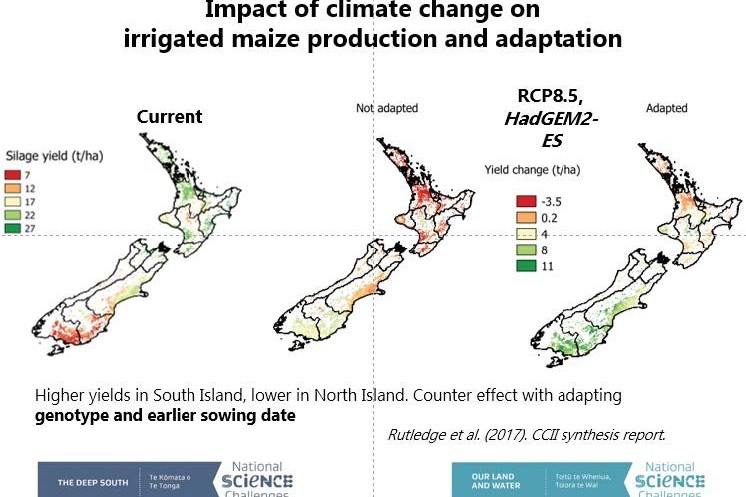Droughts, floods, heat stress and livestock disease and wine grapes which ripen weeks earlier are among possible impacts of climate change facing New Zealand, Linda Lilburne, principal scientist (spatial data science) with Manaaki Whenua – Landcare Research says. In an address to the 34th Farmed Landscapes Research Centre virtual workshop in February entitled; Challenges and opportunities for agriculture under climate change, Lilburne summarised the work by a team of scientists from across the crown research institutes.
Climate change modelling shows the risks to farming in NZ are many, she says.
“Extreme weather, drought in particular, will impact on reliable feed supply and water for crops. This has implications for stock management and may require transport of stock to other regions or destocking.”
The future for pasture-based dairying in the West Coast of the South Island may be at risk as the region is predicted to get even wetter. There will be an impact on animal health including increased risk of facial eczema, heat stress and tightening of feed supply. The changing climate is also likely to increase NZ’s biosecurity risks from pests and diseases. There will be impacts on the environment from weather extremes too.
Internationally the impacts of climate change are likely to be felt through increased commodity market volatility. Collectively, all these changes could place increased financial stress on farmers.
To counter those impacts, Lilburne says increased farm system and commodity resilience is required. She referred to long-term projections from the National Institute of Water and Atmospheric Research (NIWA) based on the IPCC climate change model; with a focus on the high atmospheric greenhouse gas concentration pathway known as RCP8.5. This pathway is based on ‘do nothing’ in terms of our collective response to the threat of climate change. It shows that by 2090, the temperature increases everywhere in NZ, with the increases tending to be larger in summer, and in the North Island, and at higher altitudes.
The modelling shows summers will be drier in the North Island and upper South Island and in winter, it will be wetter in the West Coast of the South Island, and Southland. While climate change poses many risks, Lilburne says there will also be opportunities for farmers, including a gradual increase in feed supply in cooler regions such as Southland.
The changing climate will lead to land use diversification which may see kiwifruit being grown further south of the Bay of Plenty and some crops may become less marginal in Southland. More areas becoming frost-free could present an opportunity for growing high-value crops.
For the viticulture industry, modelling of different stages of flowering showed sauvignon blanc vines could flower earlier, leading to harvests two weeks earlier. The harvest for Central Otago pinot noir could be four weeks earlier.
“There are potential risks of hotter days causing stress on plants and higher drought risk.” Growing different varieties and using technology to manage the impacts may be required. In the livestock industries, genetics and breeding will also be important to produce animals, pasture and forage crops which have increased tolerance to drought and heat.
For drier regions the questions include ‘is irrigation an option?’ with issues to be addressed around water supply and storage, the construction of dams and the economic, environmental effects of the changes. Digital agriculture and the use of sensors including those to monitor soil water use, and pasture growth and improved weather forecasting will also be important in helping farming adapt to changing climatic conditions.
Climate change will bring compounding effects, including long-term shifts in the weather and extreme events.
“Increased variability in extreme events requires an integrated approach to assess future risks. The need for adaptation strategies is now to prepare for the future.”
The report: ‘Challenges and opportunities for agriculture under climate change’ was a summary of the work of a team of scientists from across the crown research institutes including: Linda Lilburne, (Manaaki Whenua – Landcare Research), Tony van der Weerden (AgResearch), Abha Sood (Niwa), and Edmar Texiera (Plant and Food).





